VMworld Europe 2015: The Day 3 Buzz
Well, VMworld is drawing to a close, today is the last day of the whirlwind. For a conference that is only a few days it flies by yet seems like so much is packed in.
There was no General Session this morning which is a shame as at VMworld US on the last day they generally have 3 tech focused TED presenters showing some interesting things not at all related to clouds, DevOps and infrastructure which is refreshing and enlightening.
I’m sure people managed a bit of a lie-in after Faithless at the VMworld party last night and likely late night continued libations.
vExpert Daily
I was on the vExpert Daily panel again which was good to reflect on the last day.
VMware Video Game Container System
I then spent some time at the fascinating VMware Video Game Container System. This is basically a demo of running MS-DOS in a linux container and then launching the awesome DOS Prince of Persia game within that container. Seriously impressive technology.
You can see the demo:
I spent time with Ben Corrie (the guy in the demo) who was the guy to worked it all out and put the demo together. He developed Project Bonneville which is running containers as VMs which is something I’ve spent a fare amount of time exploring at VMworld. Ben gave me a great overview of Bonneville and explained how docker and the container host and ESXi interact. I discovered that the stripped down VM appliance which is the base of the system is extremely light weight without even the docker client installed. As it is not on Linux but rather ESXi means you can run any VM that ESXi can run, hence being able to run Windows MS-DOS!
We chose MS-DOS 6.22 partly for nostalgia, and partly because it neatly encapsulates a simple legacy OS. In 48 hours, we were able to use a vanilla Docker client to pull a Lemmings image from a Docker repository and run it natively in a 32MB VM via a Docker run command. The image was built using a Dockerfile, layered on top of FAT16 scratch and DOS 6.22 OS images with TTY and graphics exported back to the client
Seriously clever stuff!
Next up was an interesting session about the future:
CTO6660 – Hot Topics in VMware Research
David Tennenhouse – Chief Research Officer (cool title), VMware
VMware has always been very academic research focused likely due to founding and head office in Palo Alto, home of Stanford University. Founders Mendel Rosenbaum and Diane Green were academics. VMware still maintains a serious academic programme partnering with researchers in systems and networks and invest significantly to maintain its innovation pipeline. David started the session talking about the challenges of being an industry leader where being a fast-follower is no longer an option. David went on to talk about some recent research trends and how he sees them shaping the industry.
More and more things are being virtualised including what he called heterogeneous computing such as GPUs and FPGAs.
There are new ways to build scalable and consistent distributed systems (he says this is having your cake and eating it)
David talked about the previous predictability for Moore’s law which allowed so many companies to plan their future on ever increasing compute resources. The increase of transistors running is out of room as silicon space of the atoms is just getting too small. The only way to surpass this is to change how transistors are made. We will need to get improvements in other ways, in coordination across the industry. He said not to worry, tt’s OK, there will be innovation beyond this with new materials.
Over the past 40 years we moved from a heterogeneous tech base with different architectures and ways of wiring things together to a homogenous tech base standardising on x86. This allowed the industry to massively decrease costs.
CPU frequencies are not going up, number of cores have increased but this is likely to come to an end due to power issues. There are also now specialised features on chips particularly in mobile, running, GPUs, crypto, cameras and other image DSP on a single chip. Adding FPGAs is what some people are working on. This means we are moving away from the the existing homogenous tech base back to a heterogeneous tech base.
How does it affect virtualisation which has taken huge advantage of homogeneaity allows vCPU,, vNIC, vDisk etc. across different hardware.
Virtualisation: Hide Diversity
Specialisation: Explore Diversity
David then went on to talk about doing new things to improve computing if Moore’s law is slowing. Algorithms to the rescue! Hardware people gave more and more cycles, now it will be more efficient algorithms. We had plenty of excess capacity with hardware with people trying to work out what to do with it, Capacity will become scarcer so we need to get more efficient.
Academics research is sometimes ahead of adoption and like water building up behind a dam, gathering a whole lot of knowledge. Algorithm research is there currently and being able to do things better in software is hugely important. Previously we had chips for hardware compression, now it can be done better in software.
An example he gave of performance in creases is a 4k by 4k matrix multiplication. From doing this in Python to new algorithms allowed 55,480 times absolute speed increase much better gains than the previous doubling for Moore’s Law.
David said code optimisation will be far better done by algorithms, it will be able to iterate through so many options that code will be able to get so much more efficient,
Algorithms will also move from traditional/static algorithms to dynamic algorithms.
There are also issues with scale. With Big Data, you can’t read it all efficiently. With Big Distributed Systems, you can’t know exactly what’s going on at every moment.
Traditional algorithms based on perfect knowledge and perfect optimisation are doomed to fail, we have to settle for approximation, using statistical tools.
David then talked about scalable distributed logs for sharding big data.
On to the Internet of Things. David mentioned that the difference now is sensors are connected and this is was makes IoT, the networked connectivity rather than just having devices.
You will have lots of cheap devices talking to a local gateway, its impossible to secure all the devices as they may cost fractions of a cent and will have code vulnerabilities discovered so security will need to be at the gateway assuming insecure devices.
For IoT, there are lots of products across the EMC (Dell?) Federation.
From VMware they see AirWatch being used for device management and vRealize Operations for gateway mgmt.
David then went through some other thoughts he’s been having on how we moved from batch computing to interactive computing. Now se says we are already in proavtive computing where computers will know our needs and be able to service them.
Lunch, food has been good!
I then popped back to the Community Theatre to see:
Damian Karlson – DevOps & Organizational Debt
I then attended another group discussion on my old friend vCenter Server:
INF6393-GD – vCenter Server Group Discussion
Mohan Potheri and Madhup Gulati both from VMware led the discussion interactive by design rather than a presentation.
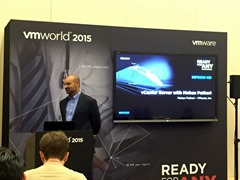 They discussed migrating to the vCenter Appliance (VCSA), reiterating the maximums are the same for Windows and VCSA, There are currently export and import tools for the SQL data but its still rather clunky. In the next version they are looking at having a much seamless migration from Windows. VMware has Feature Walkthroughs to simulate what your upgrade will look like featurewalkthrough.vmware.com
They discussed migrating to the vCenter Appliance (VCSA), reiterating the maximums are the same for Windows and VCSA, There are currently export and import tools for the SQL data but its still rather clunky. In the next version they are looking at having a much seamless migration from Windows. VMware has Feature Walkthroughs to simulate what your upgrade will look like featurewalkthrough.vmware.com
Concerns raised about Update Manager, you can still have Update Manager as a separate installation on Windows connected to a VCSA.
Good new is in 2016 Update Manager will be part of the VCSA, the UI integration is already done with vSphere 6.0 Update 1 and they’re working on porting the back-end code.
They are also looking at the possibility of putting SRM in the VCSARM in appliance.
vCenter is very resource sensitive in a good way which means it will actually improve performance with more resources
VMware is also working hard on removing need for Flash requirement in the Web Client, look at Host Client HTML5 fling to get an idea.
Talk then moved onto the PSC and they went through some of the architectural details and deployment options.
Next release of VCSA will be able to auto failover to different PSC, no load-balancer required!
I suggested with 2 VCSA’s you should be able to replicate embedded PSCs between them, a very common deployment with 2 datacenters. .
Also they are putting in some sort of higher availability for the next version of the VCSA. It sounded like an active-passive model. I still find it incredible that for all the hard work they’re been through to build a new vCenter with the VCSA they haven’t done some sort of scale out model. Madhup said that 5-10 minutes downtime should be something you should tolerate. I disagreed, if you are running a cloud or VDI environment, 10 minutes at 9am when no-one can deploy a VM or log on to their desktops would be a serious problem. They say this is a very hard problem to solve, agreed but VMware prides itself on being a distributed systems company and they can’t build a distributed vCenter. I wasn’t impressed that this wasn’t recognised. I asked about GemFire as an example. They said vROPs uses Gemfire but as the actual record is held in vCenter if something goes wrong with vROPs is can just pull the info back from vCenter as the source ,If vCenter was the source then what? I don’t know but please do something.
They said they also messed up and canned Heartbeat too soon without an alternative. They should have waited a year or two until a better native solution was available. They said the reason for canning it was the adoption of heartbeat was so poor and was bad.
I also suggested being able to have embedded PSCs between 2 vCenters replicate with each other which is currently not recommended is a must have. This is a very common deployment with 2 data centers with say SRM.
I also fed back it would be great for vCenter to have a single operator view across on-premises + vCloud Air + vCloud Networks.
Back to the Community Theatre to watch:
Chris Wahl – Picking Up New Skills
VMworld TV has been busy all week:
Kit Colbert on Cloud Native Apps and Container Strategy
We catch up with Carl Eschenbach!
Joe Baguley talks about the CTO Ambassador Program in VMware
VMworld TV – Interview – Bill Fathers
Bruce Davie, CTO for Networking at VMware, speaks exclusively to VMworld TV
VMworld – Interview – Raghu Raghuram
It’s all over
Well that’s a wrap after a exhilarating, exhausting, learning, socialising, talking, questioning, searching few days with just a few of my virtual friends, great to reconnect and catch-up.
I’m off to France for a family weekend birthday celebration where it’s likely no-one has heard of VMware and containers are for packing which may be just the mental break I need.
Thanks for everyone for the fantastic discussions and knowledge sharing. The community is still alive although evolving which is important too. I’ve certainly broadend my horizons and learned a huge amount, many answers leading to many more questions which is why I make the effort to attend. I will be posting some more thoughts later but for now…
Cloud Out! 🙂

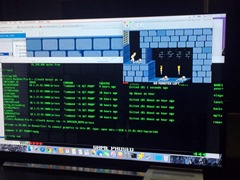
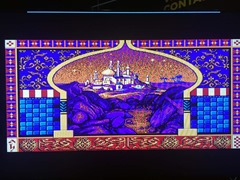
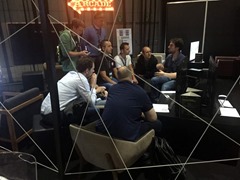
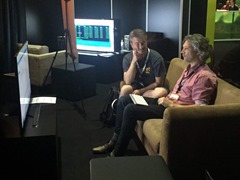
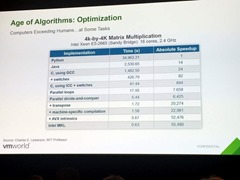
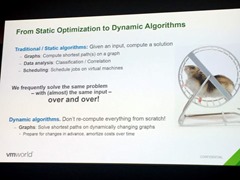
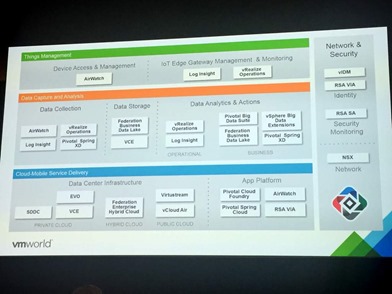
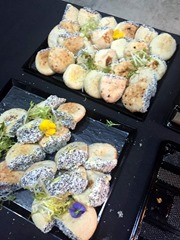
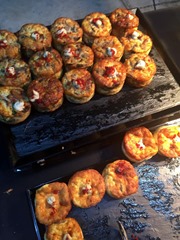
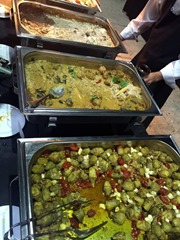


Recent Comments